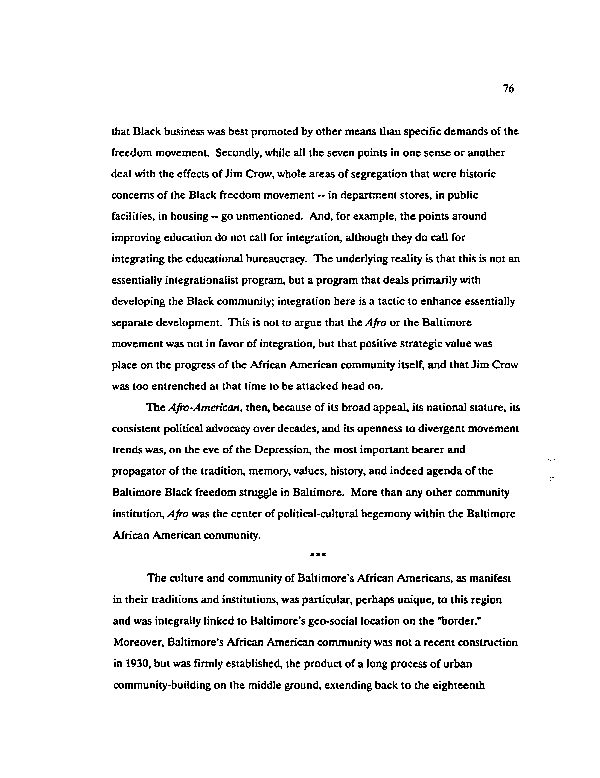|
76
that Black business was best promoted by other means than specific demands of the
freedom movement. Secondly, while all the seven points in one sense or another
deal with the effects of Jim Crow, whole areas of segregation that were historic
concerns of the Black freedom movement — in department stores, in public
facilities, in housing - go unmentioned. And, for example, the points around
improving education do not call for integration, although they do call for
integrating the educational bureaucracy. The underlying reality is that this is not an
essentially integrationalist program, but a program that deals primarily with
developing the Black community; integration here is a tactic to enhance essentially
separate development. This is not to argue that the Afro or the Baltimore
movement was not in favor of integration, but that positive strategic value was
place on the progress of the African American community itself, and that Jim Crow
was too entrenched at that time to be attacked head on.
The Afro-American, then, because of its broad appeal, its national stature, its
consistent political advocacy over decades, and its openness to divergent movement
trends was, on the eve of the Depression, the most important bearer and
propagator of the tradition, memory, values, history, and indeed agenda of the
Baltimore Black freedom struggle in Baltimore. More than any other community
institution, Afro was the center of political-cultural hegemony within the Baltimore
African American community.
*••
The culture and community of Baltimore's African Americans, as manifest
in their traditions and institutions, was particular, perhaps unique, to this region
and was integrally linked to Baltimore's geo-social location on the "border."
Moreover, Baltimore's African American community was not a recent construction
in 1930, but was firmly established, the product of a long process of urban
community-building on the middle ground, extending back to the eighteenth
|

